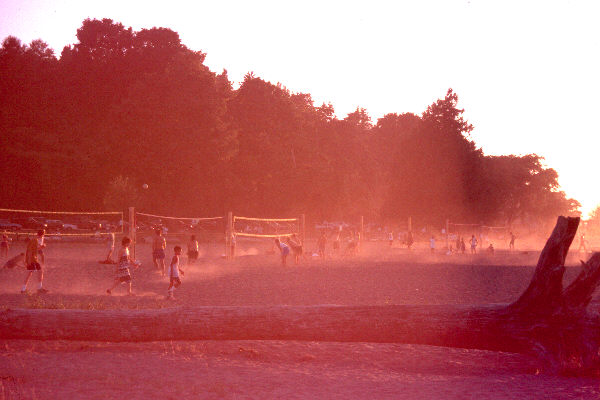Desert Dust Kills Florida Fish
New research links huge African dust clouds with the "red tides" that kill millions of fish along the Florida coast each year.
August 30, 2001: It sounds like a story from the Old Testament: Without warning, the sea turns a shade of reddish brown, killing scores of fish and other marine life � and making the water an unwelcome place for humans.
Such "red tides" have, from time to time, plagued coastal communities for centuries. Now a new study, partially funded by NASA, has revealed a surprising connection between red tides in the Gulf of Mexico and giant dust clouds that blow across the Atlantic Ocean from the distant Sahara Desert. NOAA and NASA satellites can spot such dust clouds en route from Africa to the Americas, raising hopes that space-based data could help scientists predict when red tides will strike the Gulf coast.
"The West Florida shelf is a hot spot for fishing, aquaculture and tourism, all of which can be drastically affected by a surprise visit from a red tide," said Jason Lenes, a graduate student at University of South Florida's College of Marine Science, and the lead author in the study.
Red tides, which are actually blooms of toxic algae, have in the past killed huge numbers of fish, shellfish, marine mammals, and birds. They can also trigger skin and respiratory problems in humans.
Storm activity in the Sahara Desert region kicks up fine particles from the arid topsoil there, generating vast clouds of dust. Easterly trade winds carry the dust across the Atlantic Ocean and into the Gulf of Mexico.
The new study shows that these clouds fertilize the water off the West Florida coast with iron. Plant-like bacteria use that iron to set the stage for red tides. When iron levels go up, these bacteria, called Trichodesmium, fix nitrogen in the water, converting it to a form usable by other marine life. The addition of biologically usable nitrogen in the water makes the Gulf of Mexico a friendlier environment for toxic algae.
NASA
science.nasa.gov/headlines/y2001/ast30aug_1.htm
|



